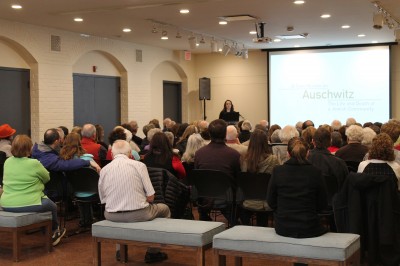70th Anniversary of the Liberation of Auschwitz Memorial Program
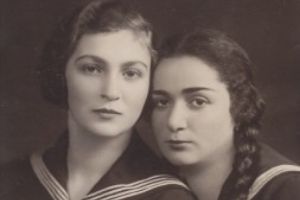
A blog post by Carolyn Bevans, Museum Educator and Programs Associate. To read more posts from Carolyn, click HERE.
A Town Known As Auschwitz: The Life and Death of a Jewish Community
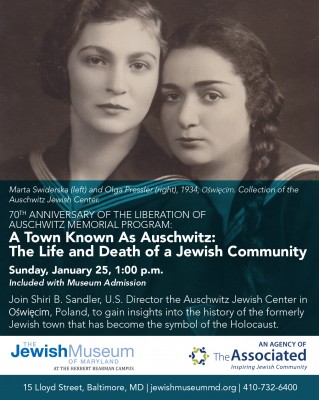
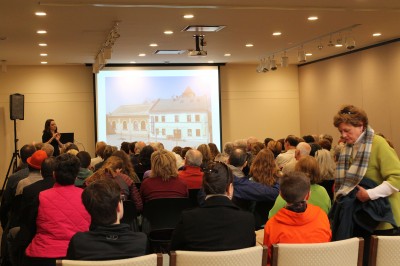
On Sunday, January 25, the JMM was delighted to host a very special speaker, Shiri B. Sandler, U.S. Director the Auschwitz Jewish Center in Oświęcim, Poland along with over 95 audience members. In honor of the 70th Anniversary of the Liberation of Auschwitz, Shiri spoke on the town of Oświęcim, which despite its long and varied history, is known for one thing: Auschwitz. However, for centuries prior to World War II, Oświęcim was home to Jews and non-Jews who lived rich and vibrant lives. And it is this side of Oświęcim’s story that Ms. Sandler sought to share. The goal of her talk was to illuminate the rich and deep history of the formerly Jewish town that has become known as the symbol of the Holocaust.
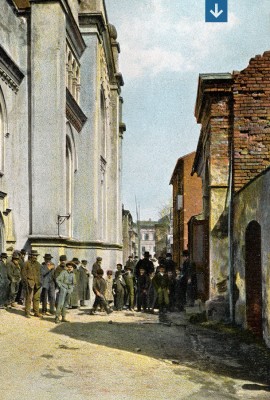
Throughout her presentation, Ms. Sandler shared with us several wonderful images that together help tell Oświęcim’s story. Although her presentation was broken in to four segments: Early Years 1200s-1800s, Jewish life 1867-1939, Wartime 1939-1945, and Post-War Life and Memory, each highlighting Oświęcim’s transition over time, Ms. Sandler spent a great deal of time discussing what life was like for people directly before the war. One of the first images she shared was of a postcard that highlighted the vibrancy of Oświęcim’s Jewish community. She highlighted the rich social life with another photograph showing members of Poalei Yisrael association in the mid-1930s festively dressed in crowns and robes for the Jewish holiday of Purim. This photograph, stressed Ms. Sandler, really speaks to the essence of Jewish life in Oświęcim as one that both embraced individuality and togetherness.
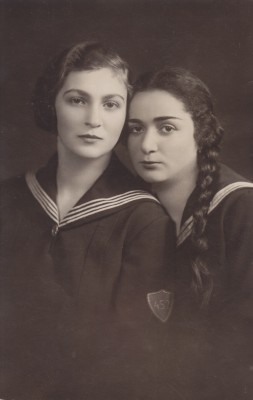
Ms. Sandler also made a point to discuss the relationship between Jews and non-Jews in Oświęcim prior to its involvement in WWII. To do so, she shared a photograph of a group of boys on a public school field trip. Although it is easy to distinguish which boys are Jewish and which are catholic by their hats (Ms. Sandler explained that the students in the hats were Jewish while those without hats were catholic), the boys stand happily united in the photograph. Beyond this, Jews were also active participants in civic life, both in military service and political leadership. Ms. Sandler explained that although the mayor was frequently catholic, the deputy was often Jewish. To further illumine the harmonious relationships between Jews and non-Jews in the town, Shiri shared a photograph of two high school students on first day of classes. However, their close pose indicates that Marta Swiderska and Olga Pressler were more than schoolmates, they were best friends. Ms. Sandler explained that the photograph was taken by Olga’s father, a well-known photographer in Oswiecim, in 1934 when both girls were seventeen years old. Olga was Jewish and Marta was Catholic. The girls would meet frequently at each other’s houses and often went to the Sola River, a popular place for young people to socialize. Unfortunately, when the war broke out, Marta and Olga were forced apart. It was later discovered that Marta survived the war and still lives in Oswiecim; Olga Presler perished at Auschwitz. From there Ms. Sandler transitioned to a photograph of men walking through synagogue ruins gathering ruble. She explained that this photograph was taken in 1940 and shows the demolition of the destroyed Great Synagogue by KL Auschwitz prisoners. It is on the most poignant photographs in the exhibition as it stands in stark contrast with the vibrant images of Jewish life and indicates Oswiecim’s solemn transition into a camp.
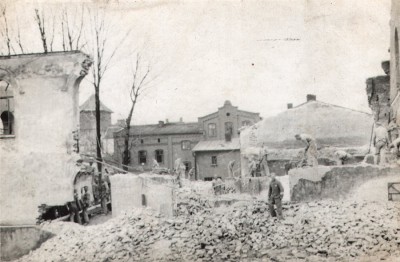
To conclude her presentation, Ms. Sandler briefly discussed the impact of the Holocaust as well as rebuilding and remembering Oświęcim. It is estimated that close to 90% of the nearly 3.5 million pre-war Polish Jews perished. Thus, only about 350,000 Polish Jews survived the Holocaust. Despite the tragedy, Jews in Poland attempted to rebuild their lives both individually and as a community. Today the Auschwitz Jewish Center stands in Oświęcim and is dedicated to public education about the richness of pre-war life, the Holocaust, and the dangers of xenophobia and anti-Semitism.
